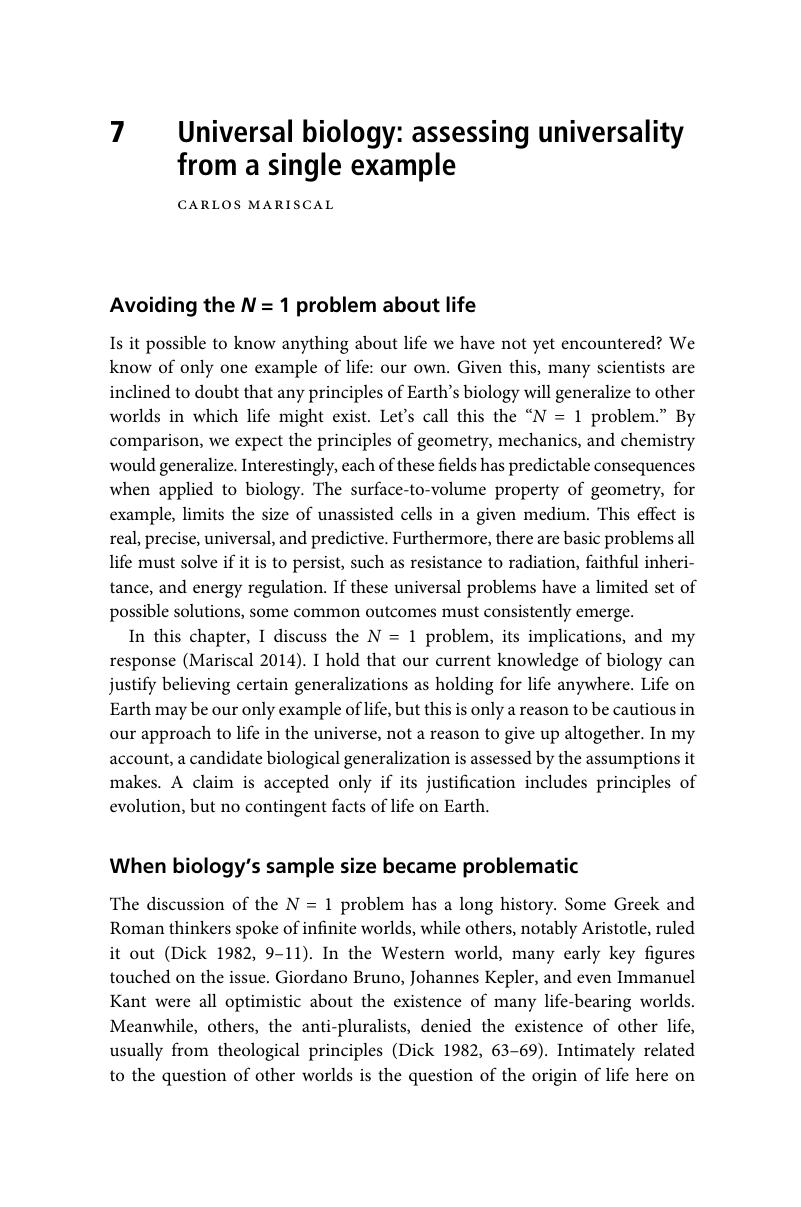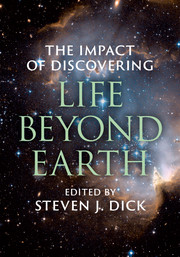Book contents
- Frontmatter
- Dedication
- Contents
- List of contributors
- Introduction: Astrobiology and society
- Part I Motivations and approaches: How do we frame the problems of discovery and impact?
- Part II Transcending anthropocentrism: How do we move beyond our own preconceptions of life, intelligence, and culture?
- 5 The landscape of life
- 6 The landscape of intelligence
- 7 Universal biology: assessing universality from a single example
- 8 Equating culture, civilization, and moral development in imagining extraterrestrial intelligence: anthropocentric assumptions?
- 9 Communicating with the other: Infinity, geometry, and universal math and science
- Part III Philosophical, theological, and moral impact: How do we comprehend the cultural challenges raised by discovery?
- Part IV Practical considerations: how should society prepare for discovery – and non-discovery?
- Contributor biographies
- Index
- References
7 - Universal biology: assessing universality from a single example
from Part II - Transcending anthropocentrism: How do we move beyond our own preconceptions of life, intelligence, and culture?
Published online by Cambridge University Press: 05 November 2015
- Frontmatter
- Dedication
- Contents
- List of contributors
- Introduction: Astrobiology and society
- Part I Motivations and approaches: How do we frame the problems of discovery and impact?
- Part II Transcending anthropocentrism: How do we move beyond our own preconceptions of life, intelligence, and culture?
- 5 The landscape of life
- 6 The landscape of intelligence
- 7 Universal biology: assessing universality from a single example
- 8 Equating culture, civilization, and moral development in imagining extraterrestrial intelligence: anthropocentric assumptions?
- 9 Communicating with the other: Infinity, geometry, and universal math and science
- Part III Philosophical, theological, and moral impact: How do we comprehend the cultural challenges raised by discovery?
- Part IV Practical considerations: how should society prepare for discovery – and non-discovery?
- Contributor biographies
- Index
- References
Summary

- Type
- Chapter
- Information
- The Impact of Discovering Life beyond Earth , pp. 113 - 126Publisher: Cambridge University PressPrint publication year: 2015
References
- 3
- Cited by



